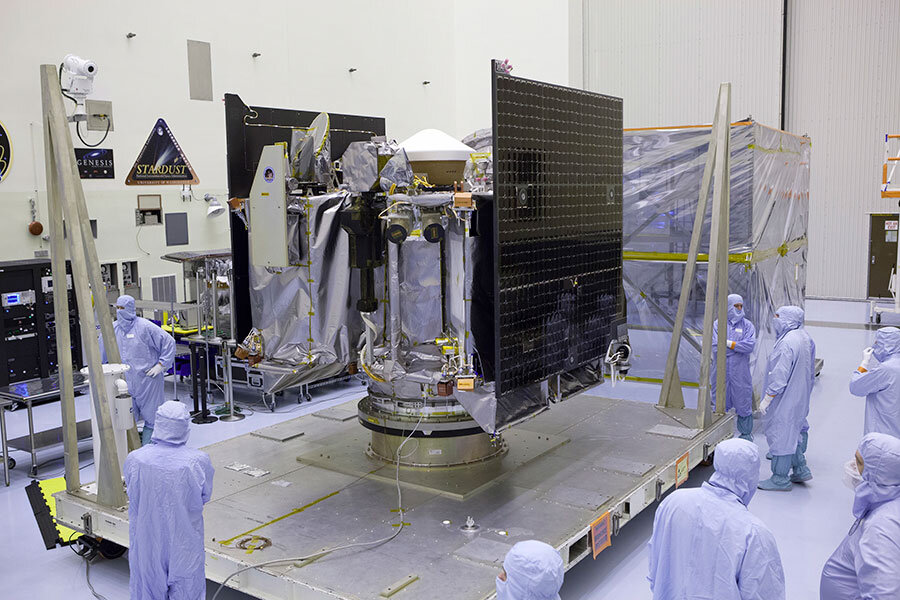NASA devises plan to keep astronauts free of biological contamination
Loading...
As crewed trips to Mars become increasingly feasible in terms of rocket technology, researchers are beginning to work out the minutiae of space travel. Where will astronauts live, work, and socialize on the six-month journey? How will they exercise? What will their kitchens look like?
And once they get to there, how will they avoid contamination?
Last year, more than 100 researchers convened at a three-day summit to identify the risks and explore possible solutions. For each of NASA’s robotic missions to other planets, the agency has implemented comprehensive protocols designed to minimize biological contamination: craft are scrubbed meticulously, and were once even baked before flight. But so far, there are no such requirements for human travel to the Red Planet.
“The benefit of having humans in space is that they're much more flexible than robots, but they could contaminate Mars with Earth life,” Catharine Conley, NASA's planetary protection officer, told Space.com.
Contamination is a major concern for NASA and other space agencies, but not necessarily for the reasons you might expect. It's not so much about keeping Martian lifeforms from Earth – as far as we know, there are none – but about keeping Earth's microbes away from Mars. Scientists guess that most bacteria would be killed by the Red Planet’s harsh conditions, but that could take hundreds or even thousands of years.
In a worst-case scenario, those microbes could thrive. That would present a major problem for astrobiologists working on the planet. Finding evidence of past Martian life could become even more difficult if researchers have to comb through microbial hitchhikers. But there’s much we don’t know when it comes to preventing such contamination.
Researchers have identified 25 such knowledge gaps, organized into three basic categories: monitoring microbes and human health; investigating how contaminants might travel between Mars and Earth; and technology and strategies for controlling potential contamination.
“A really interesting development that came to light was all the work done in the biomedical community to investigate the human microbiome and environmental microbiome – what microbes live in people and their environments,” Dr. Conley said. “Ten years ago, the technology to analyze these microbiomes was not well-established, but now there are devices on the International Space Station with microbial monitoring capabilities.”
Now, researchers are considering new ways to collect and analyze microbes while limiting risks. Safe disinfectants are also just out of reach.
“[By closing knowledge gaps] we will be able to establish clear quantitative guidelines on planetary protection that will lead to eventual international consensus standards for human missions beyond Earth orbit and particularly in support of a collaborative journey to Mars,” Gerhard Kminek, the planetary protection officer of the ESA, said in a statement.
It may seem a bit preemptive to consider things like contamination before a Mars spacecraft is even finished, but many of the smaller-scale challenges of interplanetary travel can be solved now.
On the Hawaiian volcano Mauna Loa, for example, astronauts have endured year-long isolation missions as part of NASA’s HI-SEAS project. The mission was designed to test astronaut’s physical and psychological limits, as The Christian Science Monitor reported earlier this month:
Psychological research in prisons strongly suggests that solitary confinement can have a negative impact on decision-making and emotional health. The same is likely true in deep space: studies of crew members on the International Space Station have found that on prolonged space journeys isolation may have negative effects on astronaut performance.
“They get to miss the feeling of wind on their faces,” Gloria Leon, a University of Minnesota psychologist who advises NASA on astronaut selection, tells the Monitor in a phone interview. “They miss the smells of nature, or the smell of food cooking. On a Mars voyage, Earth will be out of view. It will be the equivalent of twilight, looking out of the porthole. So there will be boredom – monotony, really – in terms of the environment.”
Small comforts may also play a significant role in the physical and psychological well being of future space travelers – doubly true for the non-professionals who may fly with private companies such as Mars One or SpaceX. To this end, agencies have already developed building concepts for Martian dwellings, complete with exercise units and small indoor gardens.








